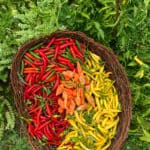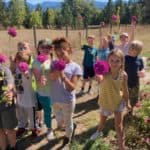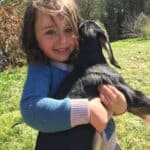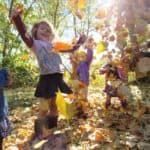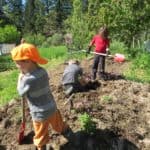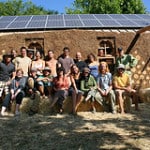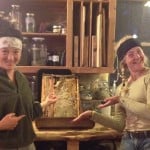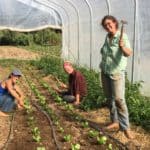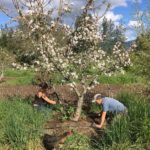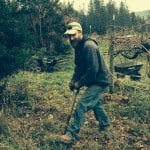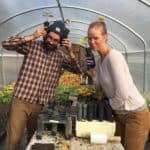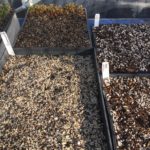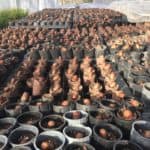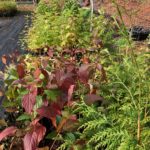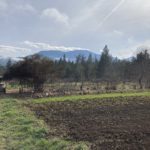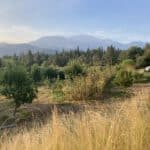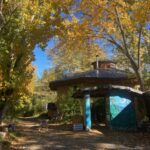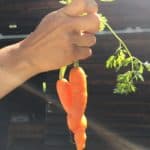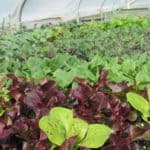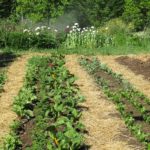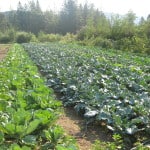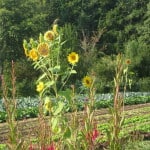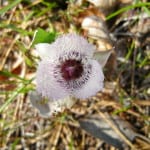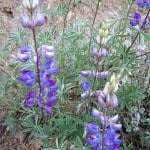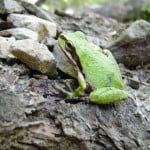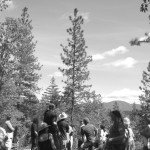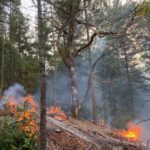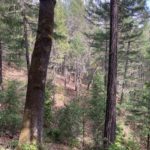
Remarkably White Oak Farm turned 20 years old this fall. Two decades is a long time in human terms and in the life of a farm; amazing people come and go, babies are born, cabins get built, trees grow and produce fruit, others are thinned and burned. Generations of chickens and goats and strawberries are raised, share their bounty and then die. Children who participated in our first years of summer camps have their own kids now. What started as a pie-in-the-sky dream shared by Stacey Denton, Eli Sarnat, and I, has turned into an established and multidimensional operation thanks to great people, hard work, generous supporters, and an open-minded local community.
When we started White Oak way back in 2002, our ideas were a bit radical and tended to raise a few eyebrows. Not many people were talking about, much less implementing, farm-based education, natural building, alternative energy, diversified perennial agriculture, or eco-forestry. Concepts such as sustainability, food-security, restoration, and resilience were on the fringes, and global warming was still a problem that most thought was a century away. We did not invent any of these techniques nor ideas, and our work has played only a tiny role in their subsequent adoption by the mainstream. Instead, our efforts stand on the shoulders of generations of farmers, builders and teachers before us, from indigenous people tending the oak woodlands and pine forests of the West with beneficial fire, to back-to-the-landers experimenting with new ways to live lightly on the land, to activists worldwide working to promote outdoor education, organic food, and climate awareness. Yet it is still gratifying to see how these ideas and ways of growing, designing and teaching have expanded and captured the attention of millions of people in the past twenty years. There is now a robust farm-to-school movement worldwide bringing local food and outdoor education to children in underserved rural and urban schools. Organic farming is the fastest growing sector of the US food system. Solar power is now incorporated in huge municipal and private construction projects and is cheaper than coal. Human and biological diversity are understood to be pillars of a sustainable and just world. And climate change is recognized as a clear and present danger that requires the world’s governments and corporations to work together on a massive scale. Of course none of these changes are universal; many people and special interests are actively fighting against them, and there is still much to be done on a global and local scale. Nonetheless, understanding and attitudes have evolved in remarkable ways in 20 years.
Looking forward to the next two decades at White Oak, I am incredibly hopeful and optimistic. Despite challenges brought by fires, drought, and uncertain political and economic conditions, the Farm is in a great position to continue as a force for positive change. We have actively thinned our forests and improved our water systems to prepare for climate challenges. Our nursery is producing tens of thousands of trees and shrubs for restoration projects around the Rogue Valley every year. Our education programs reach almost one thousand children annually and are now integral parts of the curriculum at our three partner schools. The Farm produces hundreds of pounds of seed and thousands of pounds of free food for folks in need each year with less water and fewer inputs than ever before. Our staff and board are composed of talented and dedicated people committed to the mission. And we are buttressed by an incredible community of partner schools and organizations, foundations, individual donors, program participants, and friends far and near who inspire and support us to keep growing year after year.


2022 Programs and Projects:
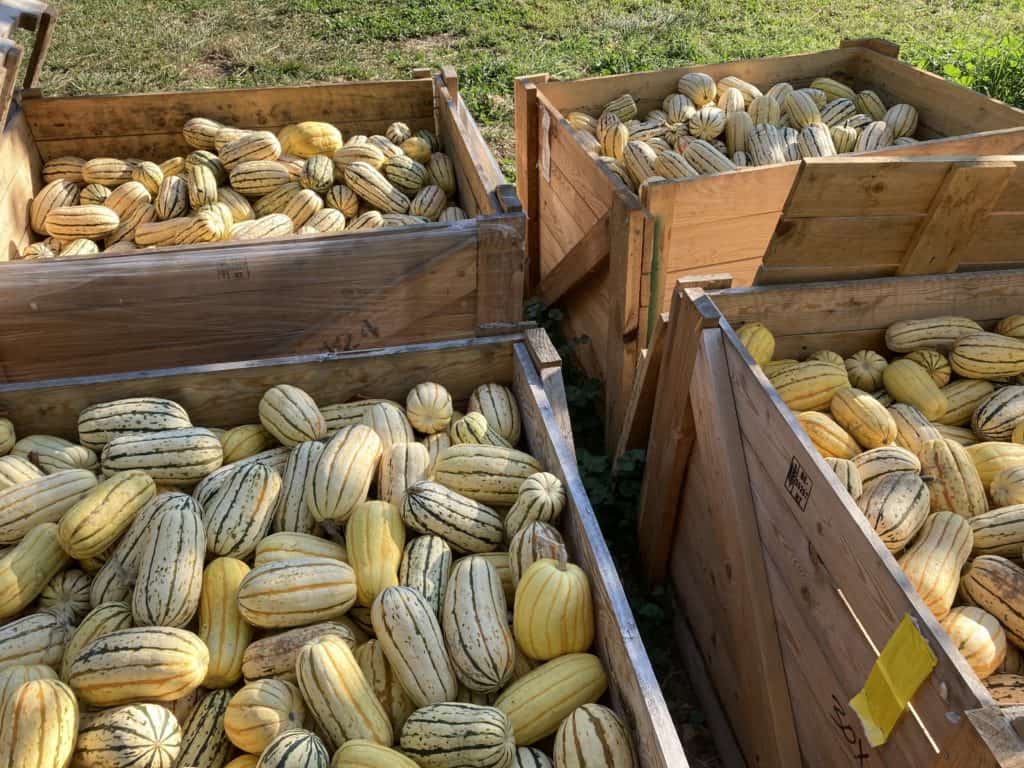
- Completed 20 acres of ecological thinning, piling and burning in our forest – bringing our two-year total to 36 acres.
- Grew 50,000 trees, shrubs, and wildflowers in our Native Nursery for riparian restoration projects around the Rogue Valley.
- Hosted 20 students for Summer Farm Camp.
- Provided weekly outdoor education programs in our partner school gardens throughout the year (Williams, Applegate & Ruch).
- Spearheaded improvements at all three school gardens including planting native shrubs, constructing a garden wall, and upgrading irrigation systems.
- Hosted 15 school field trips to the Farm.
- Hosted tours and classes for groups such as Americorps, Rogue Farm Corps, OSU Alternative Spring Break, and Lomakatsi Youth Corps.
- Grew and distributed over 4,000 pounds of free organic produce to local families, partner schools and food banks.
- Grew over 500 pounds of seed crops including sunflowers, cosmos, tomatoes, pac choi, delicata squash and native milkweed.
- Planted over 1,000 feet of native hedgerows for habitat, pollinators, and propagation materials for the nursery.
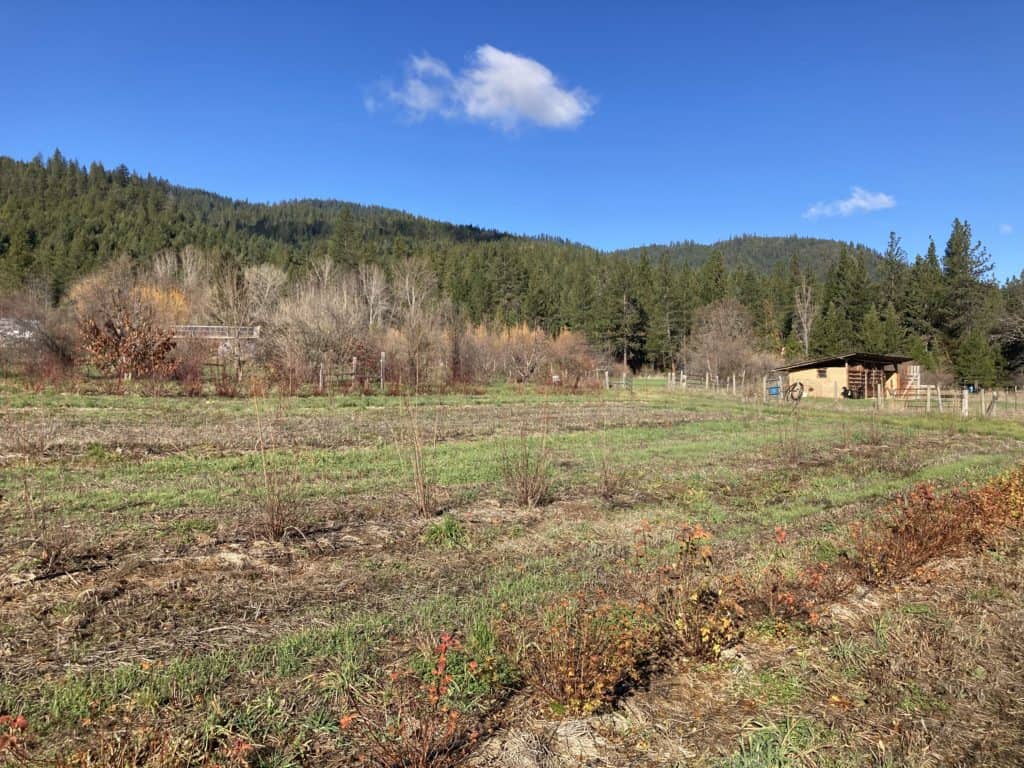
Hands-On Mud Education
By Sarah Shea Starr, Education Coordinator
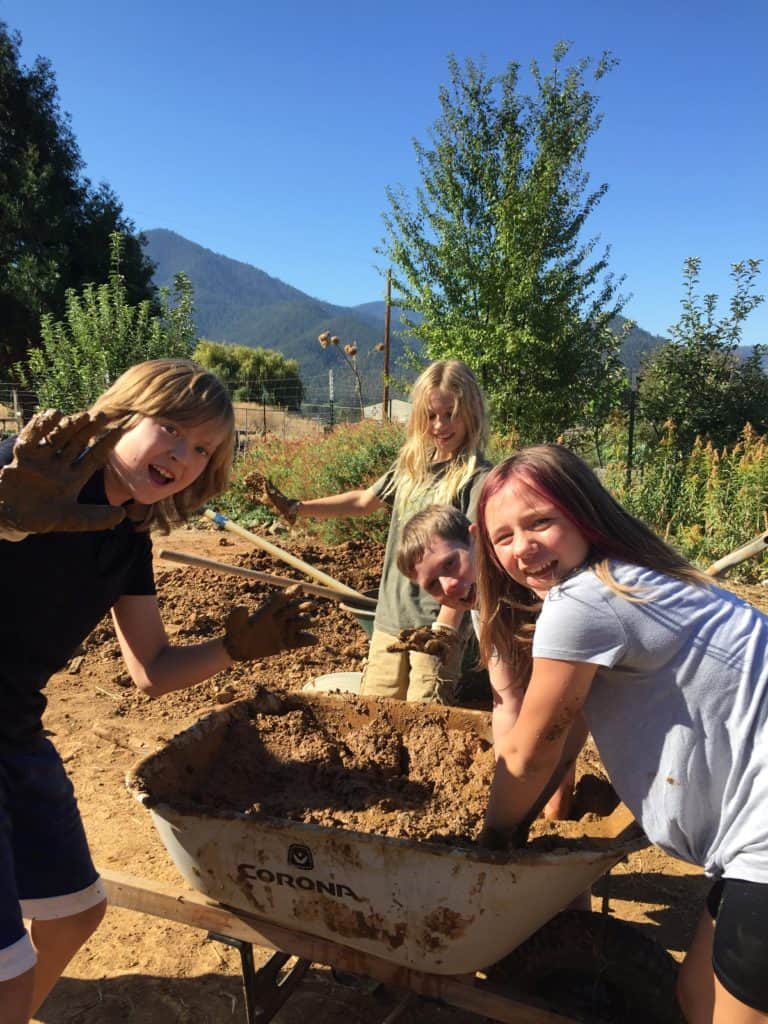
Building with mud is a bit of a wild concept. When I first introduced kids in our local schools to this idea I was met with incredulous faces. How can mud turn into a structure? How can building with clay help the environment? The answer: natural building with cob, straw bales, sustainably sourced wood, or other renewable materials is a great way to create affordable, beautiful and energy efficient structures. These buildings also have a low carbon-footprint and a minimal impact on the environment. Best of all, natural building is accessible to kids and adults with little experience because it requires few tools, simple concepts, and is quiet, safe and fun!
Over the past year, I have been incorporating hands-on cob building projects in our partner schools’ gardens and on Farm field trips. These experiential breaks from the largely sedentary and cerebral school environment provide many benefits to students. It allows them to move their bodies, breath fresh air (especially during COVID-times), demonstrate prowess to themselves and their peers, and develop practical skills such as using a hammer, a level, and a cordless drill. Additionally, natural building is a great way to encourage students who may be struggling emotionally or in the classroom to release stress and negativity and to succeed at something tangible and real. Many of these students migrate over to the garden during their recess to lend me a hand on the wall, talk, and take a break from the challenges of being a kid in our fast-paced world.
Getting our hands and feet dirty has also been a great gateway into exploring concepts of resource extraction, climate change, sustainability, and renewable building materials. For most students this was the first time they have ever really understood that there is a limited amount of certain materials on the Earth. It can be a hard subject to navigate, especially when we talk about global warming. For kids growing-up in southern Oregon, climate change is not an abstract idea, but rather an experience they live every summer with smoke, drought, and extreme heat. This reality and closeness of global warming makes the study of sustainability even more relevant. But by learning about these “hard” topics in an experiential and fun way we can empower students to feel capable and powerful in their ability to design and build a better future.
This fall we finished building a cob garden wall at the Ruch Outdoor School, and a small cob structure for native bees at the Williams School. On field trips to the Farm during the spring and fall the students were able to tour our straw bale and cob structures and work on natural plaster projects. We explored the concepts of solar gain, thermal mass, and the carbon footprint of natural materials versus manufactured building materials. The students were able to see that my crazy ideas about mud can actually turn into beautiful and functional buildings that also have a lasting positive impact on the Earth!
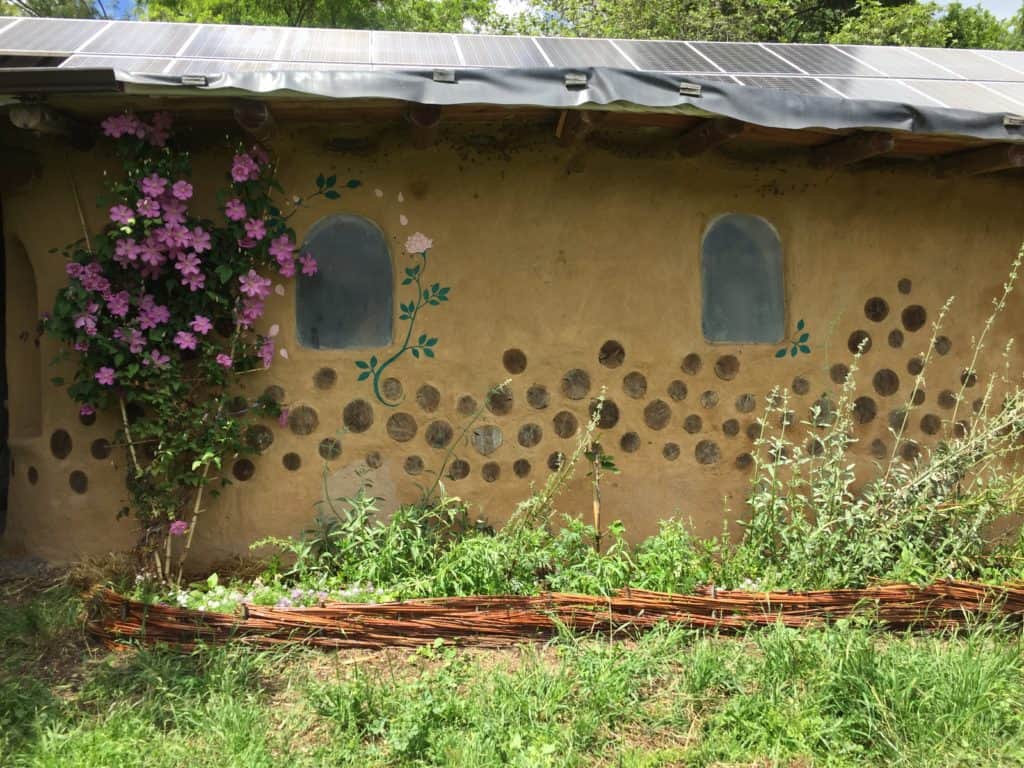
We would like to thank our many foundation supporters, partner organizations, donors, and volunteers. Thank you for supporting our work!
Evelyn Roether, Jane Neubauer, Jean Greco, Ann Neely, Helen Majzler, Tim Shea and Barbara Landry, Sara Katz and David Markle, Paul Cox, John Shea, Janet Shea, Sally and Rick Ricupero, Felicia Knowles, Carrie Little, Janie and Kirk Starr, Sallie Swartz, Kathy Shea, Martha and Samuel Jacobs, Sallie Shawl, Steve and Sandy Hill, Cheryl Grandfield, Walter and Connie Lindley, Colette and Stephan Magoon, Michelle Bienick and Brian Hannigan, Matt and Margaret Shea, Merrilee Runyan, Phil Whitmore, Shahoma McAlister, Matt and Amanda Wilson, Jeff and Kendra, High Mowing Seeds, Organically Grown Company, Oregon Dept. of Education, Greater Tacoma Community Foundation, Hendrix Foundation, Jewish Community Fund, Ashland Food Coop, Rogue Valley Farm to School, Silver Springs Nursery, Freshwater Trust, Rogue Native Plant Partnership, Ruch Outdoor Community School, Williams Elementary, Applegate School, A Greater Applegate, Josephine County Food Bank, Williams Food Pantry, Jen Hamar and Mike Merg, Eli Sarnat, James Haim, Andy Fischer, Jenny Kuehnle, Melina Barker, and especially our incredible and dedicated staff and volunteers: Sarah Shea, Nicole Kraft, Darien Aubinoe, Forrest Gillies, Stephen Saladyga, Amber Glassman, Hannah Borgenson, Julia Funaro, Josh Weber, Martin Gordon, Jake Manning, Stephanie Meehan, Taylor Starr, Willow, Ruby, Lucy and Maya


